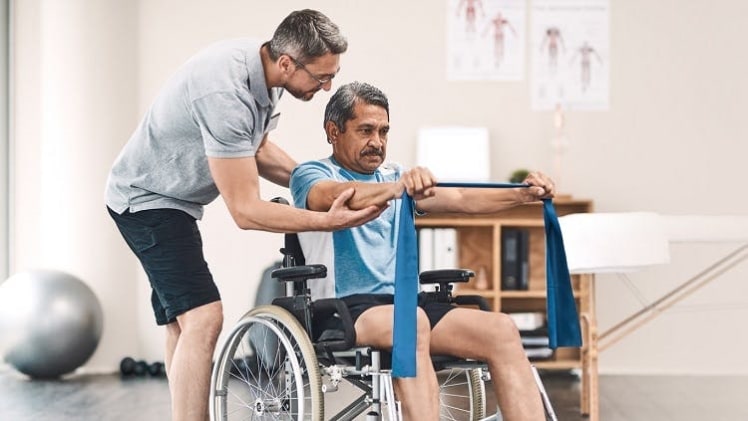A lot of times, motorcycle accidents lead to spinal cord injuries. The injury’s severity and location determine the damage’s extent. If your spinal cord is injured due to an accident, make sure to contact a personal injury attorney to seek compensation for your damages.
The spinal cord is an integral part of the body. It facilitates sending and receiving messages from the brain to other body organs. It plays a crucial role in the functioning of the body as well as the capability of the body to feel and exercise control.
A spinal cord injury is irreversible. However, proper treatment and rehabilitation can help improve the patients’ lives. They can also use adaptive devices for assistance in movement.
Based on feeling and control, there are two kinds of spinal cord injury- complete and incomplete. Patients with a complete injury cannot feel or exercise control, while patients with incomplete spinal cord injury can control and feel some parts of the body.
Based on location, there are four kinds of spinal injuries.
-
Cervical spinal injury
The cervical spine is located at the top of the spine near the vertebrae. Damage caused to this part of the neck is known as cervical spinal injury. Due to its proximity to the brain, this is the most severe type of spinal injury and affects the body more than others. This injury causes tetraplegia in some cases in which the victim’s limbs or torso may get fully or partially paralyzed.
-
Thoracic spinal injury
Injuries in the upper or middle part of the back result in thoracic spinal injury. This kind of injury causes paraplegia. As a result, the victim’s trunk and legs get paralyzed. The abdomen, legs, and lower back muscles get affected the most by this injury.
-
Lumbar spinal injury
The lowest portion of the spine is known as the lumbar spine. Injuries caused to this part of the vertebrae affect the functioning of the hips and legs. The victims can still control their upper body parts in most cases.
-
Sacral spinal injury
The area above the tailbone is known as the sacral part of the spine. The nerves in this area control the movement of the hips, groin, and the back of the thighs. Injuries in this area affect the functioning of the hips and legs as well as the bladder. Bowel control is involved in some instances as well. Victims of sacral spinal injury are generally capable of walking.

